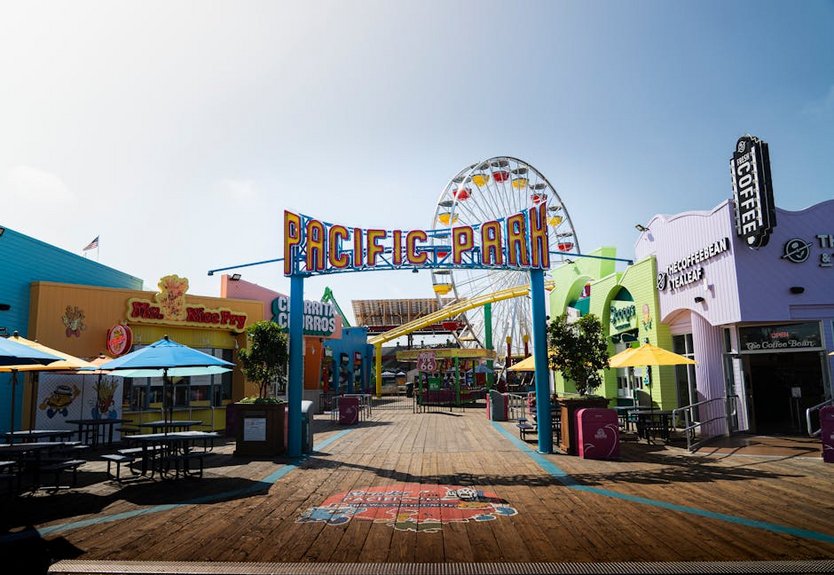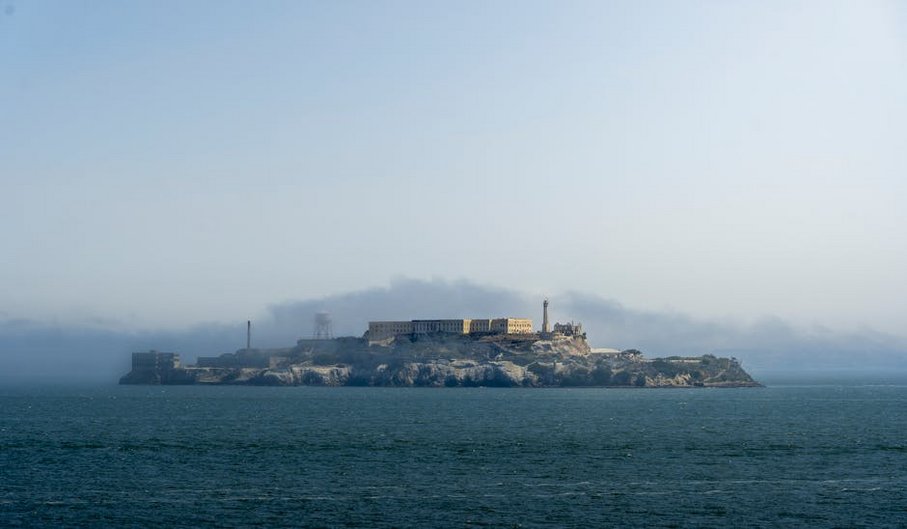San Francisco Golden Gate Bridge: Your Ultimate Travel Guide
Standing as an iconic symbol of American engineering and a beacon for travelers worldwide, the San Francisco Golden Gate Bridge represents far more than just a connection between two land masses. This magnificent suspension bridge, painted in its distinctive International Orange, welcomes you to one of the most photographically stunning and culturally rich cities in the United States. Whether you’re planning your first visit or returning to rediscover its magic, the Golden Gate experience offers breathtaking views, fascinating history, and countless opportunities for adventure. From walking across its 1.7-mile span to capturing that perfect sunset shot from Baker Beach, you’ll find that every angle reveals a new perspective on this engineering marvel. The bridge’s presence dominates the San Francisco landscape, creating a dramatic backdrop for your travel memories and serving as a constant reminder of human ingenuity meeting natural beauty. Prepare to explore not just a bridge, but an experience that has captivated millions of visitors since its completion in 1937.
San Francisco Golden Gate Bridge Essential Information
Before you embark on your Golden Gate adventure, understanding the bridge’s basic facts and historical significance will greatly enhance your experience. The bridge spans the Golden Gate Strait, connecting San Francisco to Marin County, and stands as one of the most recognizable structures globally. Construction began in 1933 during the Great Depression, providing much-needed employment, and was completed four years later under chief engineer Joseph B. Strauss. Remarkably, the bridge was finished ahead of schedule and under budget—a rarity in major construction projects. Today, it carries approximately 112,000 vehicles daily and serves as a vital transportation link while simultaneously being California’s most visited tourist attraction. The bridge’s art deco styling, combined with its innovative safety features (including the first safety net in bridge construction history, which saved 19 lives), makes it both aesthetically pleasing and historically significant.
Bridge Specifications and Features – What You Need to Know
- The total length measures 8,981 feet (1.7 miles), with the main span between towers stretching 4,200 feet, making it the longest suspension bridge in the world upon completion
- Each of the two main towers rises 746 feet above the water, equivalent to a 65-story building, with the roadway sitting approximately 220 feet above the water at high tide
- The distinctive International Orange color was originally a primer, but architects liked it so much they kept it for its visibility in fog and complement to the natural surroundings
- Budget travelers can enjoy the bridge for free by walking or cycling across, with public transportation costs of $2-$5 each way using MUNI buses from downtown San Francisco
- Mid-range experiences might include a guided bike tour ($45-65 per person) or a bay cruise that passes under the bridge ($30-40), plus lunch at nearby cafes ($15-25 per person)
- Luxury options could involve a helicopter tour ($200-250 per person), fine dining at restaurants with bridge views ($75-125 per person), and staying at waterfront hotels ($300-500 per night)
- Golden Gate Bridge Highway and Transportation District
- National Park Service – Golden Gate National Recreation Area
Visiting Hours and Access Points – Key Details
The bridge is accessible 24 hours a day, 365 days a year for pedestrians and cyclists, though specific hours apply to the Welcome Center and gift shop. The main pedestrian walkway is on the east sidewalk, open from 5:00 AM to 6:30 PM (extended to 9:00 PM during daylight saving time), while the west sidewalk is reserved for cyclists during daylight hours. Vehicle access is always available, with tolls collected electronically in the southbound direction only (into San Francisco). The most popular starting points for visitors include the Welcome Center on the San Francisco side and Vista Point on the Marin County side, both offering parking facilities and spectacular photo opportunities. For those using public transportation, numerous MUNI and Golden Gate Transit buses stop near both ends of the bridge.

San Francisco Golden Gate Bridge Planning Your Trip
Proper planning ensures you make the most of your Golden Gate Bridge experience, whether you have a few hours or several days to explore. The bridge’s microclimate can be unpredictable, with fog often rolling in unexpectedly, so dressing in layers is essential regardless of the season. Start by deciding how you want to experience the bridge—walking across, cycling, driving, or viewing from various vantage points—as each offers a different perspective. Consider purchasing a Clipper Card for convenient access to public transportation, which will help you reach the bridge and explore surrounding attractions. Booking accommodations in advance is highly recommended, especially during peak tourist seasons from June to August and during major city events. Create a flexible itinerary that allows for weather changes while ensuring you experience both the bridge itself and the beautiful parks and neighborhoods that surround it.
Best Time to Visit San Francisco Golden Gate Bridge
The Golden Gate Bridge presents dramatically different experiences throughout the year, making timing crucial for your visit. Late spring (April-May) and early fall (September-October) typically offer the most reliable weather, with clearer skies and less fog providing optimal viewing and photography conditions. Summer months (June-August) often bring the famous San Francisco fog, which can completely envelop the bridge by afternoon, creating mystical photo opportunities but potentially obscuring views. Winter months (November-March) offer the clearest air after rains, with spectacular visibility and fewer crowds, though you’ll need to prepare for cooler temperatures and possible rain. For photography enthusiasts, sunrise provides beautiful light from the eastern viewpoints, while sunset creates stunning silhouettes against the western sky. Weekdays generally see fewer visitors than weekends, especially during early morning hours.
Budget Planning and Costs for Golden Gate Experience
Essential Preparation Checklist for Bridge Visit
Preparing properly for your Golden Gate visit will ensure comfort and enjoyment throughout your experience. Pack layered clothing—even on sunny days, the bridge can be windy and 10-15 degrees cooler than inland areas, with a waterproof jacket recommended for unexpected fog moisture. Wear comfortable walking shoes with good traction, as the bridge walk is approximately 3.4 miles round trip and can be slippery when damp. Bring sunscreen and sunglasses, as the reflection off the water can be intense when the sun emerges from the fog. Consider bringing a reusable water bottle and snacks, though facilities are available at both ends. Photography enthusiasts should pack extra camera batteries and memory cards, as you’ll find endless photo opportunities. Check the bridge’s official website for any temporary closures or special events that might affect access during your planned visit.
San Francisco Golden Gate Bridge Top Attractions and Activities
The Golden Gate Bridge serves as the centerpiece for numerous activities and attractions that cater to all interests and fitness levels. Walking across the entire span remains the most popular activity, allowing you to feel the bridge’s vibration underfoot and experience breathtaking 360-degree views of the bay, Alcatraz, and the San Francisco skyline. Cycling across has become increasingly popular, with several rental companies offering bikes near the bridge’s southern approach and easy return options from Sausalito via ferry. For those seeking different perspectives, numerous boat tours depart from Fisherman’s Wharf and sail underneath the bridge, providing a unique upward view of the massive structure. The surrounding Golden Gate National Recreation Area offers world-class hiking trails with various vantage points, while the recently renovated Welcome Center provides excellent educational exhibits about the bridge’s construction and history.
Must-See Highlights Around the Golden Gate
Beyond the bridge itself, several iconic spots offer unparalleled views and experiences. Crissy Field, once a military airfield, now provides a beautiful waterfront park with walking paths that frame perfect bridge photographs with the city skyline. Fort Point National Historic Site, located directly beneath the bridge’s southern end, offers a fascinating look at Civil War-era architecture with the massive bridge overhead creating a dramatic contrast. Baker Beach on the western side provides stunning perspective shots of the bridge with the Pacific Ocean in the foreground, though note that the northern section of the beach is clothing-optional. The Marin Headlands across the bridge offer the famous postcard view from above, particularly from Hawk Hill or Battery Spencer, where you can capture the entire span with the city behind it. Don’t miss the Warming Hut at Crissy Field for refreshments and bridge-themed souvenirs.
Hidden Gems and Local Favorites Near the Bridge
While most visitors stick to the main viewpoints, several less-crowded spots offer equally impressive experiences with more tranquility. Lands End Trail, starting near the Legion of Honor museum, provides breathtaking coastal views and several overlooks where you can see the bridge from a distance amidst dramatic cliffside scenery. The Presidio Tunnel Tops, a newer park area, offers 14 acres of green space with specially designed overlooks that provide unique angles of the bridge rarely seen in photographs. Fort Baker on the Marin side features beautiful historic buildings, a quiet marina, and the Bay Area Discovery Museum, perfect for families with children. For a truly local experience, visit the Wave Organ, an acoustic sculpture located on a jetty near the Marina District that creates sounds from wave action with the bridge as a backdrop. These spots offer equally magnificent views without the crowds of the main tourist areas.
San Francisco Golden Gate Bridge Practical Travel Information
Navigating your visit to the Golden Gate Bridge requires understanding transportation options, accommodation choices, and practical considerations unique to this iconic landmark. The bridge is easily accessible from throughout San Francisco via multiple transportation modes, though parking can be challenging, especially on weekends and during peak hours. The Golden Gate Bridge Highway and Transportation District operates an efficient system of buses and ferries that connect the bridge area to downtown San Francisco and Marin County. For international visitors, the bridge is approximately 30-45 minutes from San Francisco International Airport (SFO) depending on traffic, with Uber, Lyft, taxis, and airport shuttle services readily available. While the bridge itself doesn’t charge pedestrians or cyclists, vehicle tolls are collected electronically southbound only, with current rates around $8-9 for two-axle vehicles paid via license plate photography or FasTrak transponder.
| Transportation Method | Details and Access Points | Approximate Cost (USD) |
|---|---|---|
| Public Bus | MUNI 28, 29, 43; Golden Gate Transit 10, 70, 101 | $2.50-$5.00 one way |
| Bike Rental | Several companies near Fisherman’s Wharf offer rentals | $8-$16 per hour, $35-$50 full day |
| Rideshare/Taxi | Drop-off at Welcome Center or Vista Point | $15-$30 from downtown |
| Driving/Parking | Limited parking at both ends, 2-4 hour limits | $0.75-$1.25 per hour at meters |
| Bay Cruise | Depart from Pier 39 or Fisherman’s Wharf | $30-$40 for 1-hour tour |


